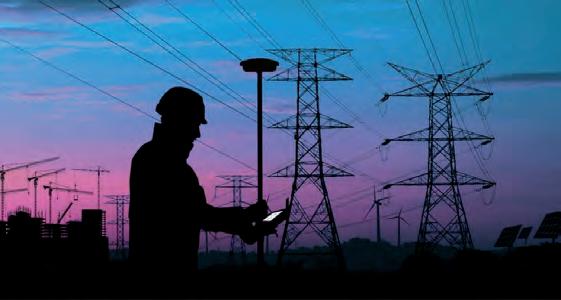FUTURE PERSPECTIVE
BY VANESSA LAWRENCE
The Future of Geospatial: Are we Everyone’s Friend or do They Not Know we Exist? The perspective I bring to the ‘future of geospatial’ is taken from spending the last five years assisting senior government officials from both developing and developed countries and also briefing senior members of board rooms of some of the largest organizations in the world. They have all wished to think through how the added dimension of location could make a difference to their decision-making.
Whilst we in the sector use terms such as ‘geospatial information’, ‘our geospatial community’ or even ‘the GIS team’, most senior government officials and senior directors of organizations do not normally recognise these terms. They are looking at either enhancing the information infrastructure of their country or their organization, or they are looking at the competitive advantage to be gained from using extra data sources that other competing organizations have not yet discovered. The boundaries between ‘geospatial’ and so many other disciplines, in most users’ minds, are simply non-existent. We too may need to break down these boundaries more than we have done to date, in order to attract interest in what we do. And not just in the boardroom; young graduates around the globe are flocking to Data Science and Space roles, but are they equally attracted to Geospatial? The answer currently is ‘no’ as so many still do not understand the power of our work and the benefit to society it can bring. Everything happens somewhere Talking to a Professor of Data Science who ‘zoomed’ me
recently, he had little knowledge of geospatial, let alone that it underpinned some of the biggest decisions taken each day. We discussed its use in government and their operations from managing resources, administering services, to tackling emergencies. We covered its role in industries, including construction, the property market, utilities, insurance, defence and security, navigation, waste and asset management, and logistics. Our discussion turned to its use at global scale, to assist understanding and to tackle some of the biggest issues facing the globe: environmental issues such as climate change, food security, identifying poverty and inequality and underpinning the measuring and monitoring of United Nations Sustainable Development Goals (UN-SDGs).
an economic contributor. The geospatial industry globally was valued at £300bn by GeoBuis Report (2019). According to recent economic research, an economic uplift can be expected to occur by organising geospatial information within a National Spatial Data Infrastructure (NSDI) or a similar infrastructure. In a study undertaken by the Boston Consulting Group (BCG) and a report by the UK Geospatial Commission (2018), it was estimated that the fiscal uplift could total up to £14bn for the United Kingdom alone. We also know that we overlap considerably with the Space industry as well as the Data Science and AI industry (Figure 1). Each year, we become more beneficial to them as the interoperability and open systems approach around the
By the end of the conversation, the phrase that I first used when writing for GIS Europe magazine in 1993 ‘everything happens somewhere’, was ringing in his head together with the understanding that geospatial information is now seen as a vital part of a national and organizational information infrastructure. Fitting in So where do we fit in the future? Firstly, we know geospatial is
Figure 1. The changing symbiotic relationship of the geospatial, space and AI industries over time. (Image Courtesy: Location International Ltd 2020.)
26 Winter 2020
26-27-28_mslawrence.indd 26
02-12-20 16:41





